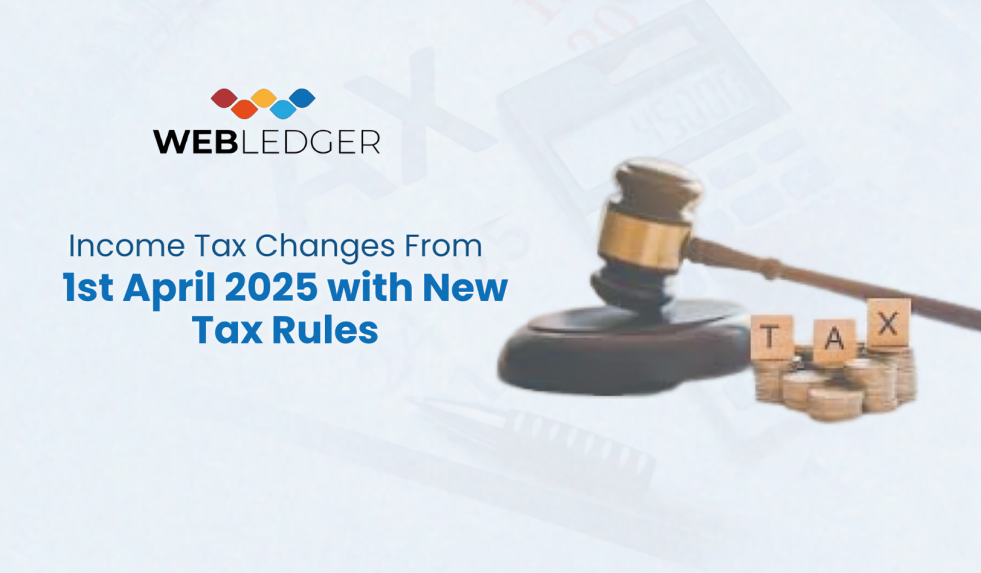When India takes off into the financial year 2025-26, taxpayers will be confronted with one of the greatest changes in Income Tax Rules in recent years. As Finance Minister Nirmala Sitharaman makes some new changes under the redefined Income Tax framework, it is important that every unionized and entrepreneurial ear deciphers how these Income Tax Changes will reflect on their net income, investment policies and financial sustainability. The new tax regime focuses on convenience, clarity and flexibility to the current day taxpayers.
An Overview of the New Income Tax Regime
The newly introduced Income Tax regime has been intended to reduce the burden of taxation since April 1, 2025, and as such, the target of the regime is to provide more disposable income to middle-class and self-employed individuals. The new Income Tax slabs are more inclusive and efficient in terms of taxation because the progressive rates of taxation offer fairness to different earning groups.
| Income Range (₹) | Tax Rate (%) |
| 0 – 4,00,000 | 0% |
| 4,00,001 – 8,00,000 | 5% |
| 8,00,001 – 12,00,000 | 10% |
| 12,00,001 – 16,00,000 | 15% |
| 16,00,001 – 20,00,000 | 20% |
| 20,00,001 – 24,00,000 | 25% |
| Above 24,00,000 | 30% |
This modified slab system will raise the exemption threshold of Rs.3 lakh to Rs.4 lakh and provide a larger rebate in Section 87A with taxable income up to Rs.12 lakh will pay no tax. The policy will help attract more taxpayers to transition to the new regime due to its simplicity and simplicity.
What’s New in the Tax Rules?
Under the new Income Tax Rules, there are a number of reforms, which favor not only those with salaried jobs but also small business owners. The government targets to incentivize saving and retirement planning as well as increase in income through the expansion of standard deductions and encouraging NPS contributions.
- Standard Deduction: Raised to Rs.75,000 as opposed to Rs.50,000 on salary earners and pensioners, allowing workers to be more tax-free.
- NPS Deduction: The contribution passed on by employers to NPS will now be deductible at 14 percent, which will motivate the amassing of wealth over the long-term.
- Family Pension Deduction: This deduction will be increased by a factor of 2 Rs.25,000 (to benefit dependents of employees who retire).
- Default Regime: The new regime remains the default regime, and every year tax payers have the choice of using the old regime by their own choice.
These reforms mark a transition to a simplified and progressive tax system that makes the system less confounding and administrative-intensive.
Better Accounting
Please enter the OTP below to proceed.
Old and New Tax Regimes Comparison
The former tax regime and the new regime support various financial lifestyles. The old regime favors individuals who invest actively in the tax saving plans whereas the new regime favors the professionals who desire simplicity rather than various deductions.
| Aspect | Old Regime | New Regime (FY 2025-26) |
| Basic Exemption | ₹2.5 lakh – ₹5 lakh (based on age) | ₹4 lakh (for all) |
| Deductions | Multiple (80C, 80D, etc.) | Limited |
| Standard Deduction | ₹50,000 | ₹75,000 |
| Tax Rebate Limit | ₹5 lakh | ₹12 lakh |
| Surcharge | Up to 37% | Capped at 25% |
Although the old regime continues to attract investors through the deductions offered in the Sections 80C, 80D, among others, the new one makes filing simpler and offers a better cash flow. It is up to you finally to decide based on the income level, lifestyle, and financial objectives.
How to Find out Your Income Tax?
Income Tax can never be easier to calculate under the new regime. Through the updated slabs and deductions, taxpayers are able to anticipate their liability within several minutes.
E.g. suppose that you earn Rs.20 lakh annually:
- Standard Deduction: Rs.75,000
- Employer’s NPS contribution: Rs.2,00,000
- Taxable Income: Rs.17.25 lakh
The total amount of tax you will pay will be Rs.2,07,500 plus 4% cess (Rs.8,300) making the amount payable to be Rs.2,15,800.
The old regime deductions in 80C and 80D can still assist taxpayers to reduce further liability. A digital Income Tax calculator will help to avoid any mistakes in calculations and compare the regimes intelligently.
Surcharge and Cess
The surcharge rates will not be reduced, but they will be crucial in ensuring that there is equity among the income groups. The graded surcharge system makes sure that the contribution made by the high-income earners is fair and the burden on the middle-income taxpayers is avoided.
- Income up to Rs.50 lakh – Nil
- Rs.50 lakh to Rs.1 crore – 10%
- Rs.1 crore to Rs.2 crore – 15%
- Above Rs.2 crore – 25%
The cess of the health and education is capped at 4 percent thus strengthening the government’s will to invest in welfare programs. It is important to keep track of these surcharges to compute the tax and pay taxes in advance.
Picking an Appropriate Tax Regime
Whether to invest in the old or the new regime depends on how you plan to invest and your long term objectives. The new regime favors the individuals who favor simple taxation whereas the old one is perfect in favor of those who use deductions to save more.
Tax professionals advise that you should consider your income set up after a year and file tax returns. Such instruments as online Income Tax calculators and CAs consultation could help to identify the most profitable course of action. Keep in mind that choice flexibility limits give the taxpayers the capability to respond to the changes in their financial priorities.
Final Thoughts
The FY 2025-26 Income Tax Changes will be a move towards a more inclusive, more intelligent, and less complicated taxation system. Through fair exemptions by balancing low rate, the government hopes to increase compliance, transparency and remove tax burden to honest taxpayers.
Regardless of whether you are a salaried worker, a pensioner, or an entrepreneur, it can be beneficial to keep yourself updated on such Tax Rules so that you could make an effective financial decision and invest in a more strategic way. With the Indian economy still developing, this tax reform can be regarded as a powerful move towards digital governance and economic development.



